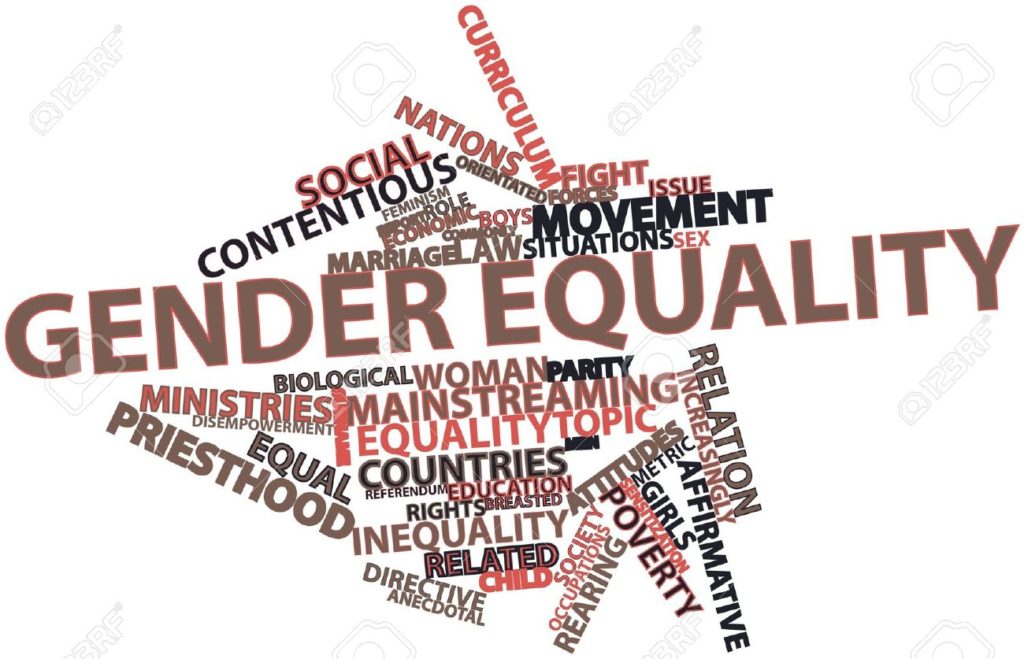In the run-up to President’s Day weekend, San Francisco Bay Area designer and entrepreneur Carly Dennett was in the mood to shake things up. Uplifted by the Women’s March in Oakland a few weeks before, but still mad as hell about the election of a misogynist president and almost daily attacks on the civil rights of women and girls from the new administration, Carly’s Flowerland nursery in the town of Albany became a hub for a community looking for ways to fight back. In honor of President’s Day, the big Flowerland sign on Solano Ave read: “It’s time to plant your impeach trees” – the work of Carly’s husband Matthew Hooven. Carly and her staff were brainstorming about how to unload a shipment of self-watering pots that just hadn’t hit it off with her customers as well as she’d hoped. Her long-time friend and co-worker Carrie Schulze came up with…
The Place of Women in Economic Activities
According to a recent report from the World Economic Forum (WEF), many countries in the world have successfully eliminated the huge gender gaps. But while the scope of gender inequality has narrowed in some countries, other countries still have situations where women severely trail men in economic participation, educational attainment, political empowerment, and even basic health outcomes. The WEF’s 2014 Global Gender Gap Report measured disparities between men and women in 142 countries. In the worst-scoring nations, economic and educational opportunities, as well as political representation and health outcomes, were far worse for women than for men. Yemen, the worst country, has been the lowest ranked nation in the report since 2006, when the WEF began measuring gender inequality. Based on the WEF report, 24/7 Wall St. reviewed the 10 worst countries for women. Worst cases of gender inequality consistently failed to give the female residents the same access to…
Banking Industry Addresses Diversity, Adding Women to Boards
By: Elizabeth Olson Banking and capital markets often viewed as dominated by men, achieved high scores in a newly released survey measuring the diversity in their director ranks. In 2016, women made up 26 percent of the boards in the banking and capital markets industry, which tied with the retail industry, according to a survey conducted by PricewaterhouseCoopers. The average rate of women on boards of companies in the Standard & Poor’s 500-stock index was 21 percent. In addition, the 21 companies that the survey defined as its banking and capital markets sector have shored up their position by adding more women to their boards. About 13 percent of new directors in 2016 were women. The entertainment and media industry also scored well, with 22 percent women directors. Despite a negative spotlight on the lack of women in moviemaking, the 17 entertainment and media companies that were included in the…
The Gender Equality and SDGs
In light of the Gender Equality Forum 2017, Helle Bank Jorgensen, President of the Global Compact Network Canada (GCNC), sat down with Paul Polman, Unilever CEO for an interview and asked the following questions on Gender Equality, Women’s Empowerment, and more. Helle: Why is Gender Equality important to you and Unilever? Paul: Addressing barriers to gender equality is not just the right thing to do, it’s also vital for our future growth. We at Unilever consider the respect and promotion of women’s rights and the advancement of women’s economic inclusion both a human right as well as a business priority. By promoting the formal and active participation of women in the economy, we aim to transform lives, families, communities and economies. Globally, it is acknowledged that empowering women economically creates a ripple effect on families, communities and economies. In turn, we have the opportunity to grow our markets, brands and…
Tackling the Downsides of Women Leadership Roles
It is a good thing that in recent years, a lot of woman are not only making adequate impact in the workspace, but are also assuming top management positions. For the heavy clamour for gender equality, this is good news. However, some downsides exist which may be worse than not having women in the workspace at all. This has to do with what is known as the “SECOND GENERATION GENDER BIAS”. Many CEOs who make gender diversity a priority—by setting aspirational goals for the proportion of women in leadership roles, insisting on diverse slates of candidates for senior positions, and developing mentoring and training programs—are frustrated. They and their companies spend time, money, and good intentions on efforts to build a more robust pipeline of upwardly mobile women, and then not much happens. The problem with these leaders’ approaches is that they don’t address the often fragile process of coming…
Gender Equality in Tanzania
By: John Namkwahe Ismail Mohammed, 35, a resident of Mkunwa in Mtwara rural district and a peasant farmer of cassava and cashewnuts, had never before heard of gender equality and he didn’t have the slightest idea what the word ‘gender’ really means. He is married to Mwanaasha Juma and the two have been blessed with two children; a daughter (10-year-old) and a son (6-year-old). Due to lack of knowledge about gender equality, Ismail admits to committing a number of social injustices such as depriving his wife of her basic rights. Such a misguided attitude towards his wife consequently led to unending misunderstandings in the family. Ismail now regrets his former dictatorial demeanor and looks to God for forgiveness. Ismail represents a number of men with the same overbearing attitude towards their spouses; an attitude that has seen women being deprived of their rights such as right of ownership, freedom of…
Gender Imbalance: Are Females Missing Out on Singapore’s Tech Revolution?
By: Linette Lim
Women make up just a third of the booming tech industry’s workforce. The question is, how far does gender bias from the time they are in school play a part? In 2008, Fiona Tay made history by becoming the first female to win the Singapore Physics Olympiad. Fast-forward eight years, and she is still challenging gender stereotypes, although she is nowhere to be found near a physics lab.







